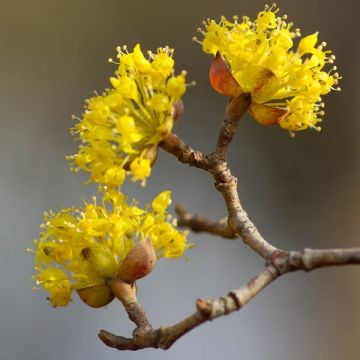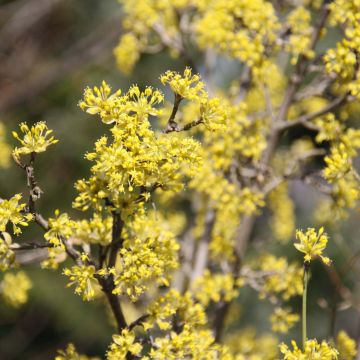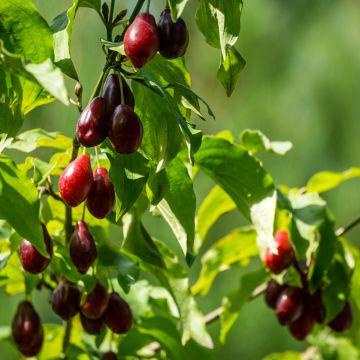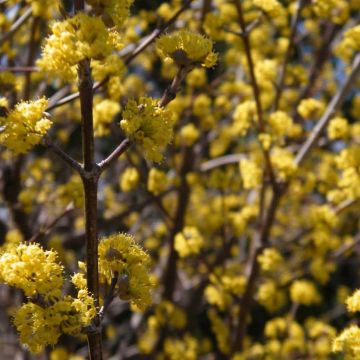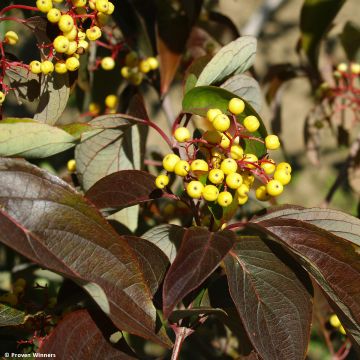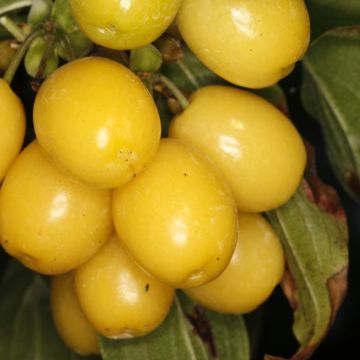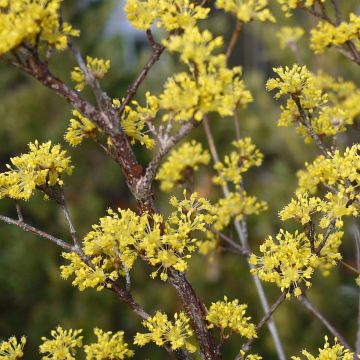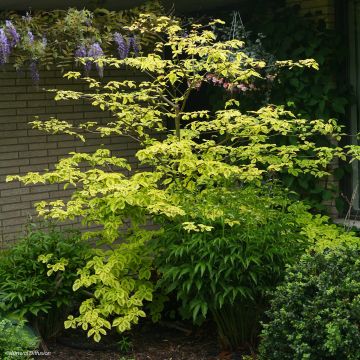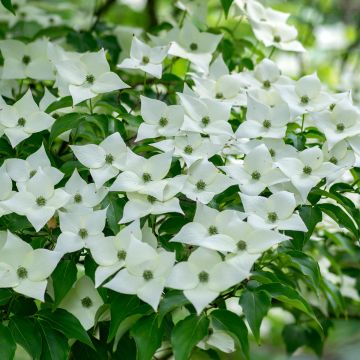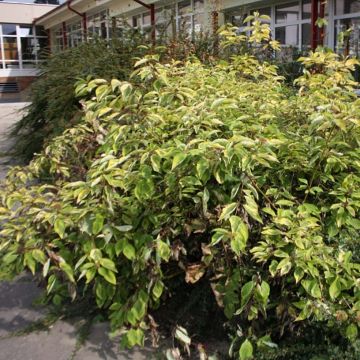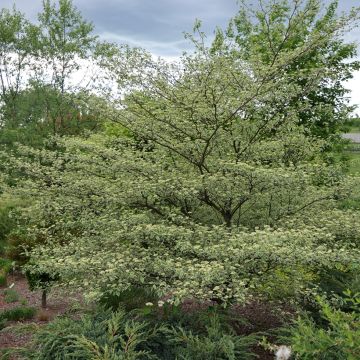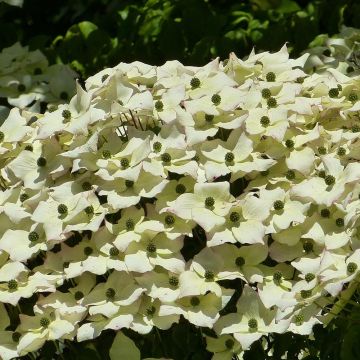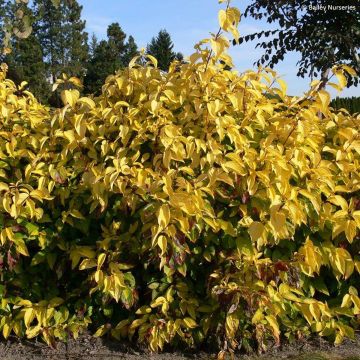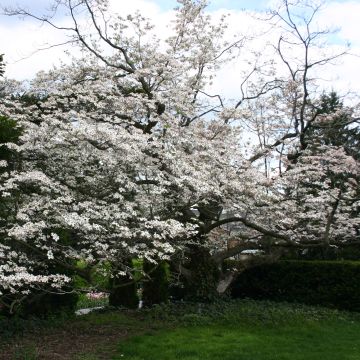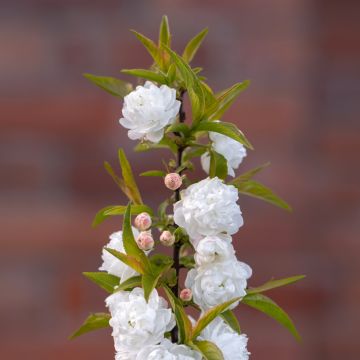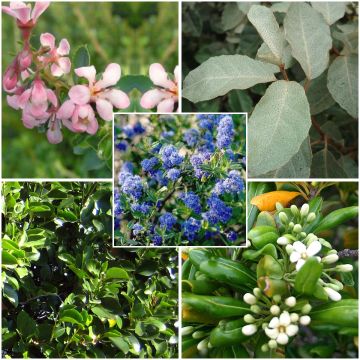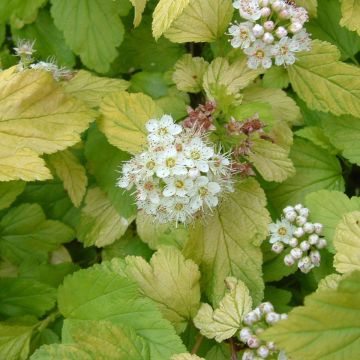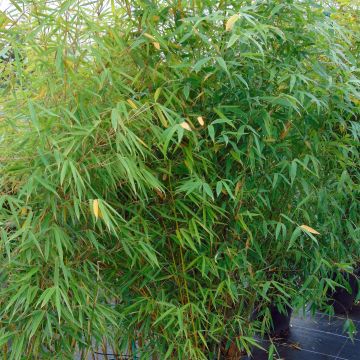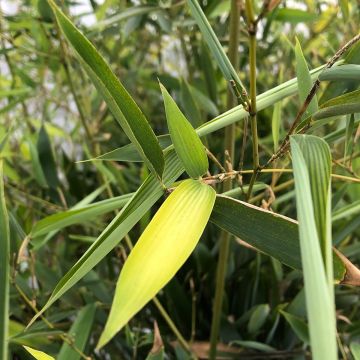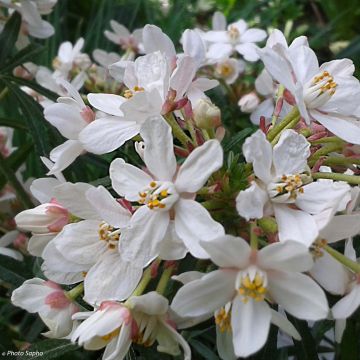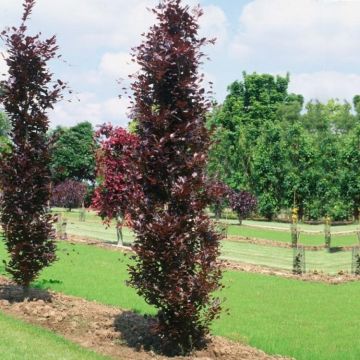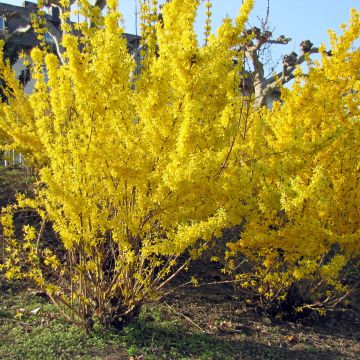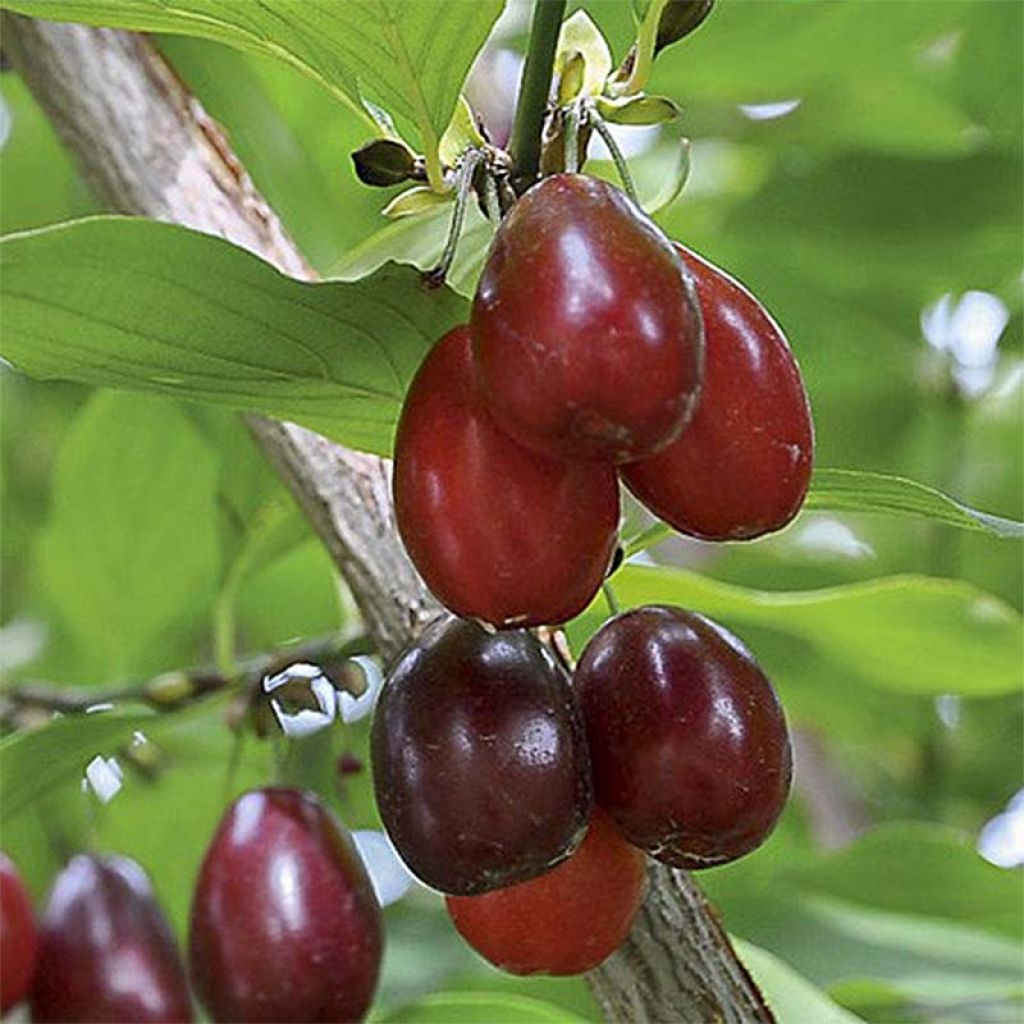

Cornus mas Schönbrunner Gourmet Dirndl - European Cornel
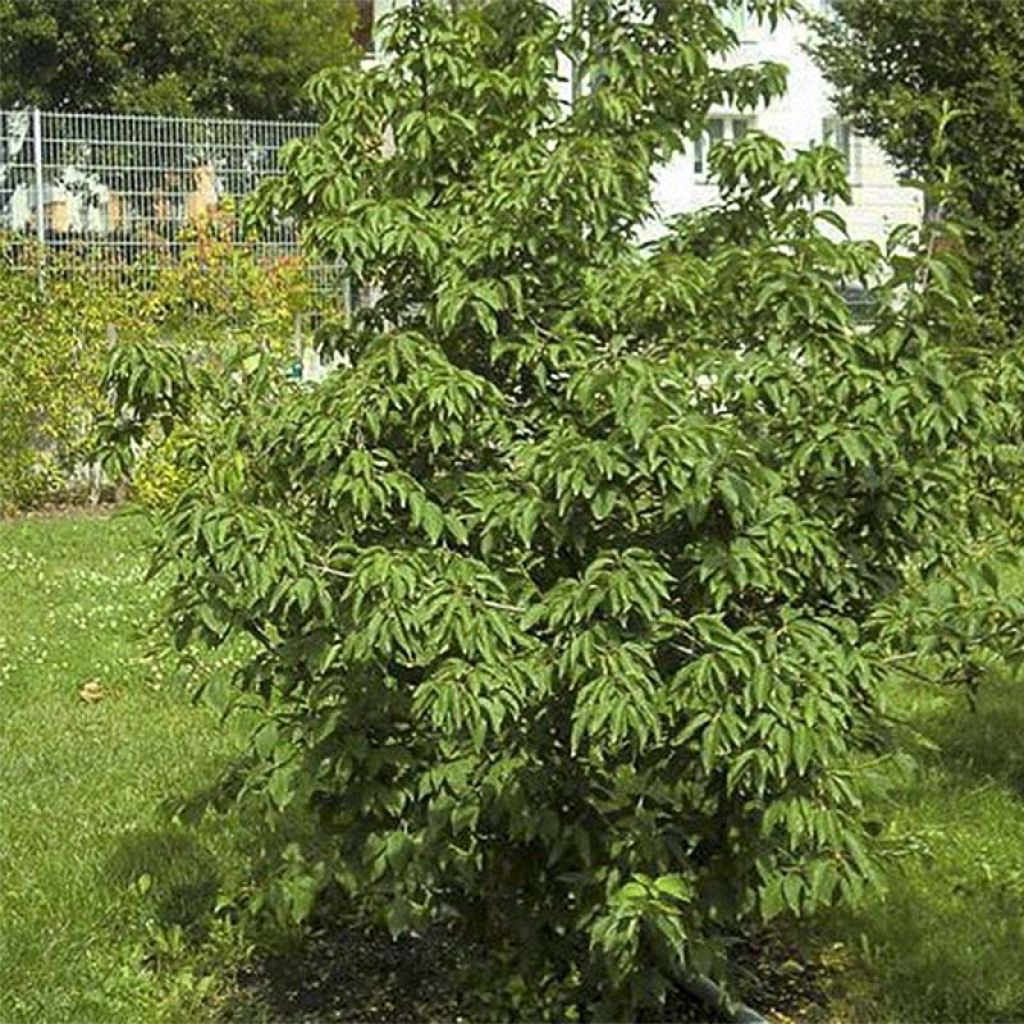

Cornus mas Schönbrunner Gourmet Dirndl - European Cornel
Cornus mas Schönbrunner Gourmet Dirndl - European Cornel
Cornus mas Schönbrunner Gourmet Dirndl
Cornelian Cherry, European Cornel
Why not try an alternative variety in stock?
View all →This plant carries a 24 months recovery warranty
More information
We guarantee the quality of our plants for a full growing cycle, and will replace at our expense any plant that fails to recover under normal climatic and planting conditions.
From €5.90 for pickup delivery and €6.90 for home delivery
Express home delivery from €8.90.
Does this plant fit my garden?
Set up your Plantfit profile →
Description
Cornus mas 'Schönbrunner Gourmet Dirndl' is an Austrian variety that stands out for its more erect and compact habit and abundant fruiting, of good size. The bush produces red fruits from the end of August, quite large for the species, in the shape of a 3 cm (1.2 in) long pear with a sweet taste, edible raw or prepared as jams, jellies, liqueurs or juices. With medium growth and only reaching 4 m (13 ft) high and 3 m (10 ft) wide, it is an interesting choice to enhance a terrace border or a small lawn, in isolation. From March-April, the bush is covered with bunches of tiny star-shaped bright yellow flowers, catching the eye from afar. In autumn, it is just as decorative with its deciduous foliage with orange-red hues. A very hardy and robust bush, tolerating heat, drought and limestone!
Cornels originate from the southeast and centre of Europe where their late winter flowering is appreciated for brightening public spaces and gardens still bare at this time of year. In February-March, their bare branches are covered with a multitude of small star-shaped golden flowers, gathered in bouquets. They appear on secondary shoots, but also on the main branches in a colourful scene. The flowers are visited by the first bees of the season and give way to edible berries, the cornels, which ripen and redden at the end of summer. Male cornels are vigorous, compact bushes, with a stiff habit in a juvenile state, then spread out as they age. In our gardens, they measure about 5 m (16 ft) high with an equivalent span. They bear dark green foliage, composed of elliptical leaves, 4 to 10 cm (1.6 to 3.9 in) in length. In autumn, the Cornus mas catches the eye when it ignites with incandescent colours, dominated by purple-red.
‘Schönbrunner Gourmet Dirndl' is the result of Austrian hybridization and is characterized by more compact dimensions than the typical species and a more erect habit. It measures 4 m (13 ft) high and 3 m (10 ft) wide making it suitable for enhancing a small garden or framing a terrace. Its fruits also distinguish it from the typical species as they are 2 to 3 times larger than classic cornels. Very sweet and particularly rich in vitamin C, they are generally harvested from late August to September which extends the cornel-tasting season that usually takes place in August. They can be enjoyed as jam, jelly or just fallen from the tree provided they are ripe. Birds love to feed on them which helps to maintain a healthy ecosystem in your garden. Self-fertile, it is nevertheless recommended to plant at least two specimens to obtain satisfactory fruiting.
The Male Cornel 'Schönbrunner Gourmet Dirndl' likes sunny to semi-shaded situations. Very undemanding, it is content with ordinary, light and poor soil, even limestone. Plant it in a mix of horticultural compost and garden soil that you have enriched with an organic fertiliser. In winter, avoid stagnant water by planting it in well-drained soil. Its great hardiness allows it to withstand temperatures down to -20°C (-4°F). Pruning Cornus mas is not necessary but can be done at the end of winter, before regrowth, to shape the bush or remove dead or diseased wood. It is not very susceptible to diseases and pleasant to live with.
This little Male Cornel can be planted in isolation and be the highlight of a lawn from the end of winter when it is covered with flowers, in September thanks to its multitude of red berries, but also in autumn with its fiery foliage. It can also be used in the background of a bed, supported by evergreen hedge bushes like Eleaegnus ebbingei or Photinia fraseri ‘Red Robin’ which will highlight its luminous flowering. This Cornus will also find a place within a hardy hedge, alongside a Strawberry Tree or a burning bush to attract the fauna of your garden thanks to their decorative berries. Its modest dimensions also allow it to be grown in a large container to decorate a terrace or balcony, in the company of evergreen bushes that will take over when the Cornus goes to sleep for the winter.
Report an error about the product description
Cornus mas Schönbrunner Gourmet Dirndl - European Cornel in pictures






Plant habit
Flowering
Foliage
Botanical data
Cornus
mas
Schönbrunner Gourmet Dirndl
Cornaceae
Cornelian Cherry, European Cornel
Cultivar or hybrid
Other Cornus
Planting and care
Cornelian cherry 'Schönbrunner Gourmet Dirndl' likes sunny to semi-shaded situations. Very undemanding, it is content with ordinary, light and poor soil, even limestone. Plant it in a mix of horticultural compost and garden soil that you have enriched with an organic fertiliser. In winter avoid standing water by planting it in well-drained soil. Its great hardiness allows it to withstand temperatures down to -20°C (-4°F).
Pruning of Cornus mas is not necessary but can take place at the end of winter to shape the bush or to eliminate dead or diseased wood. It is not very sensitive to diseases and proves to be a very pleasant plant to grow.
Planting period
Intended location
Care
-
, onOrder confirmed
Reply from on Promesse de fleurs
Hedge shrubs
Haven't found what you were looking for?
Hardiness is the lowest winter temperature a plant can endure without suffering serious damage or even dying. However, hardiness is affected by location (a sheltered area, such as a patio), protection (winter cover) and soil type (hardiness is improved by well-drained soil).

Photo Sharing Terms & Conditions
In order to encourage gardeners to interact and share their experiences, Promesse de fleurs offers various media enabling content to be uploaded onto its Site - in particular via the ‘Photo sharing’ module.
The User agrees to refrain from:
- Posting any content that is illegal, prejudicial, insulting, racist, inciteful to hatred, revisionist, contrary to public decency, that infringes on privacy or on the privacy rights of third parties, in particular the publicity rights of persons and goods, intellectual property rights, or the right to privacy.
- Submitting content on behalf of a third party;
- Impersonate the identity of a third party and/or publish any personal information about a third party;
In general, the User undertakes to refrain from any unethical behaviour.
All Content (in particular text, comments, files, images, photos, videos, creative works, etc.), which may be subject to property or intellectual property rights, image or other private rights, shall remain the property of the User, subject to the limited rights granted by the terms of the licence granted by Promesse de fleurs as stated below. Users are at liberty to publish or not to publish such Content on the Site, notably via the ‘Photo Sharing’ facility, and accept that this Content shall be made public and freely accessible, notably on the Internet.
Users further acknowledge, undertake to have ,and guarantee that they hold all necessary rights and permissions to publish such material on the Site, in particular with regard to the legislation in force pertaining to any privacy, property, intellectual property, image, or contractual rights, or rights of any other nature. By publishing such Content on the Site, Users acknowledge accepting full liability as publishers of the Content within the meaning of the law, and grant Promesse de fleurs, free of charge, an inclusive, worldwide licence for the said Content for the entire duration of its publication, including all reproduction, representation, up/downloading, displaying, performing, transmission, and storage rights.
Users also grant permission for their name to be linked to the Content and accept that this link may not always be made available.
By engaging in posting material, Users consent to their Content becoming automatically accessible on the Internet, in particular on other sites and/or blogs and/or web pages of the Promesse de fleurs site, including in particular social pages and the Promesse de fleurs catalogue.
Users may secure the removal of entrusted content free of charge by issuing a simple request via our contact form.
The flowering period indicated on our website applies to countries and regions located in USDA zone 8 (France, the United Kingdom, Ireland, the Netherlands, etc.)
It will vary according to where you live:
- In zones 9 to 10 (Italy, Spain, Greece, etc.), flowering will occur about 2 to 4 weeks earlier.
- In zones 6 to 7 (Germany, Poland, Slovenia, and lower mountainous regions), flowering will be delayed by 2 to 3 weeks.
- In zone 5 (Central Europe, Scandinavia), blooming will be delayed by 3 to 5 weeks.
In temperate climates, pruning of spring-flowering shrubs (forsythia, spireas, etc.) should be done just after flowering.
Pruning of summer-flowering shrubs (Indian Lilac, Perovskia, etc.) can be done in winter or spring.
In cold regions as well as with frost-sensitive plants, avoid pruning too early when severe frosts may still occur.
The planting period indicated on our website applies to countries and regions located in USDA zone 8 (France, United Kingdom, Ireland, Netherlands).
It will vary according to where you live:
- In Mediterranean zones (Marseille, Madrid, Milan, etc.), autumn and winter are the best planting periods.
- In continental zones (Strasbourg, Munich, Vienna, etc.), delay planting by 2 to 3 weeks in spring and bring it forward by 2 to 4 weeks in autumn.
- In mountainous regions (the Alps, Pyrenees, Carpathians, etc.), it is best to plant in late spring (May-June) or late summer (August-September).
The harvesting period indicated on our website applies to countries and regions in USDA zone 8 (France, England, Ireland, the Netherlands).
In colder areas (Scandinavia, Poland, Austria...) fruit and vegetable harvests are likely to be delayed by 3-4 weeks.
In warmer areas (Italy, Spain, Greece, etc.), harvesting will probably take place earlier, depending on weather conditions.
The sowing periods indicated on our website apply to countries and regions within USDA Zone 8 (France, UK, Ireland, Netherlands).
In colder areas (Scandinavia, Poland, Austria...), delay any outdoor sowing by 3-4 weeks, or sow under glass.
In warmer climes (Italy, Spain, Greece, etc.), bring outdoor sowing forward by a few weeks.

































